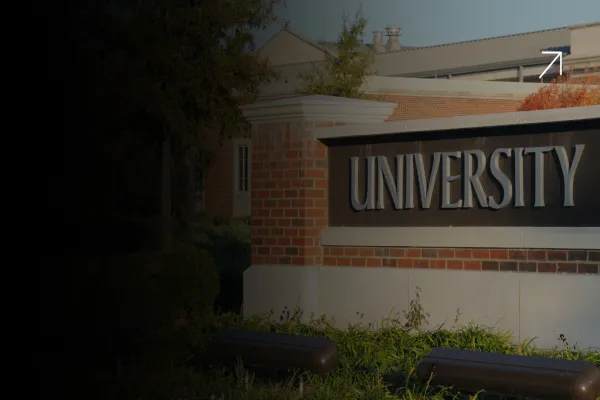Why Your Digital Experience Is Costing You Applications
Student recruitment doesn’t start at the campus gate. It starts online. The moment a prospective student lands on your website, they’ve already started evaluating your institution. According to Formstack, 50% of students say a university’s digital experience directly influences their decision to apply. That’s a number you can’t afford to ignore.
Universities need to stop thinking about websites as static brochures. They are living ecosystems. They are the front door to your entire academic offering. If your site loads slow, has broken navigation, or throws students into an endless maze of PDFs, you've lost them. This is why optimizing your digital journey is not optional anymore. It’s table stakes.
Application Rates Rise When Digital Touchpoints Are Personalized
Modern Campus ran a case study showing a 2,798% increase in inquiry conversions using web personalization. Yes, you read that right. That’s not an outlier. That’s what happens when institutions take the time to map out and refine their digital touchpoints across the funnel.
When a student first lands on your site, they should see content relevant to their interests, their academic goals, and even their region. Not just a dump of general information. Think of it like this: the more relevant you are, the more likely they are to stay and engage. And that engagement increases your chances of conversion.
The Role of E Learning Module Design in Student Retention
Now let’s talk about what happens after enrollment. Your e learning module is your new classroom. If it’s outdated, clunky, or unintuitive, students disengage. The quality of the module directly reflects the quality of your academic delivery. A seamless e learning module doesn’t just support learning; it strengthens retention.
A well-structured e learning module should be intuitive, responsive across devices, and integrate seamlessly with tools like AWS or Moodle. Universities using such solutions have reported measurable improvements in student engagement. When students feel supported by the tech, they stick around longer and perform better.
Optimizing for the Student Experience
You know what tech you’re offering, and you know it works. But your clients don’t care about the backend. What they care about is the experience. That means you need to talk in terms of outcomes, not platforms.
Instead of saying you’re using Drupal LMS, say you’re building flexible, modular, and scalable learning experiences. Highlight that these platforms allow rapid content deployment, real-time analytics, and support for multiple integrations. That’s what matters to decision-makers. Not the CMS label. You’re not selling software. You’re selling better student outcomes.
That said, when your underlying tech supports optimized content delivery, centralized student data, and frictionless UX, it shows. You just don’t have to name-drop to make it obvious.
Student Experience Is the Differentiator in a Crowded Market
Competition is fierce. Students have options. Your digital journey is your pitch. That includes your landing pages, program pages, application workflows, and your LMS. If one of those touchpoints fails, you lose credibility.
Every element should contribute to the student experience. And that experience needs to feel modern, human-centered, and outcome-driven. If a prospective student can’t find what they’re looking for within two clicks, they’re gone. If the e learning module isn’t easy to use, they won’t come back. If your application process has friction, they’ll drop off before hitting submit.
Every click, scroll, and form field counts.
Research Proves That Better UX = Higher Conversion
Don’t just take our word for it. A survey from Ruffalo Noel Levitz found that 85% of prospective students said the quality of a college website influenced their perception of the institution. Meanwhile, the EAB reports that institutions optimizing for mobile experience see 30% more engagement from prospective applicants.
This is why digital journey optimization isn’t just a tech initiative. It’s a growth initiative. Every team, whether it is marketing, admissions, IT, or academic leadership, should be aligned around improving the student experience.
What This Means for You
If you're a university leader, decision-maker, or stakeholder in e-learning, your job just got harder and more important. Students don’t just want quality education. They want it wrapped in a seamless, frictionless digital experience. They want your site to load fast. They want the LMS to be mobile-friendly. They want personalized content, real-time responses, and flexibility.
Your competitors are already investing in these areas. Some are doing it with solutions powered by AWS or Moodle. Some are using open-source, modular LMS systems that scale. What matters is not the name of the platform but what it delivers.
If your current digital journey doesn’t support prospective students from first click to first class, you're already behind.





